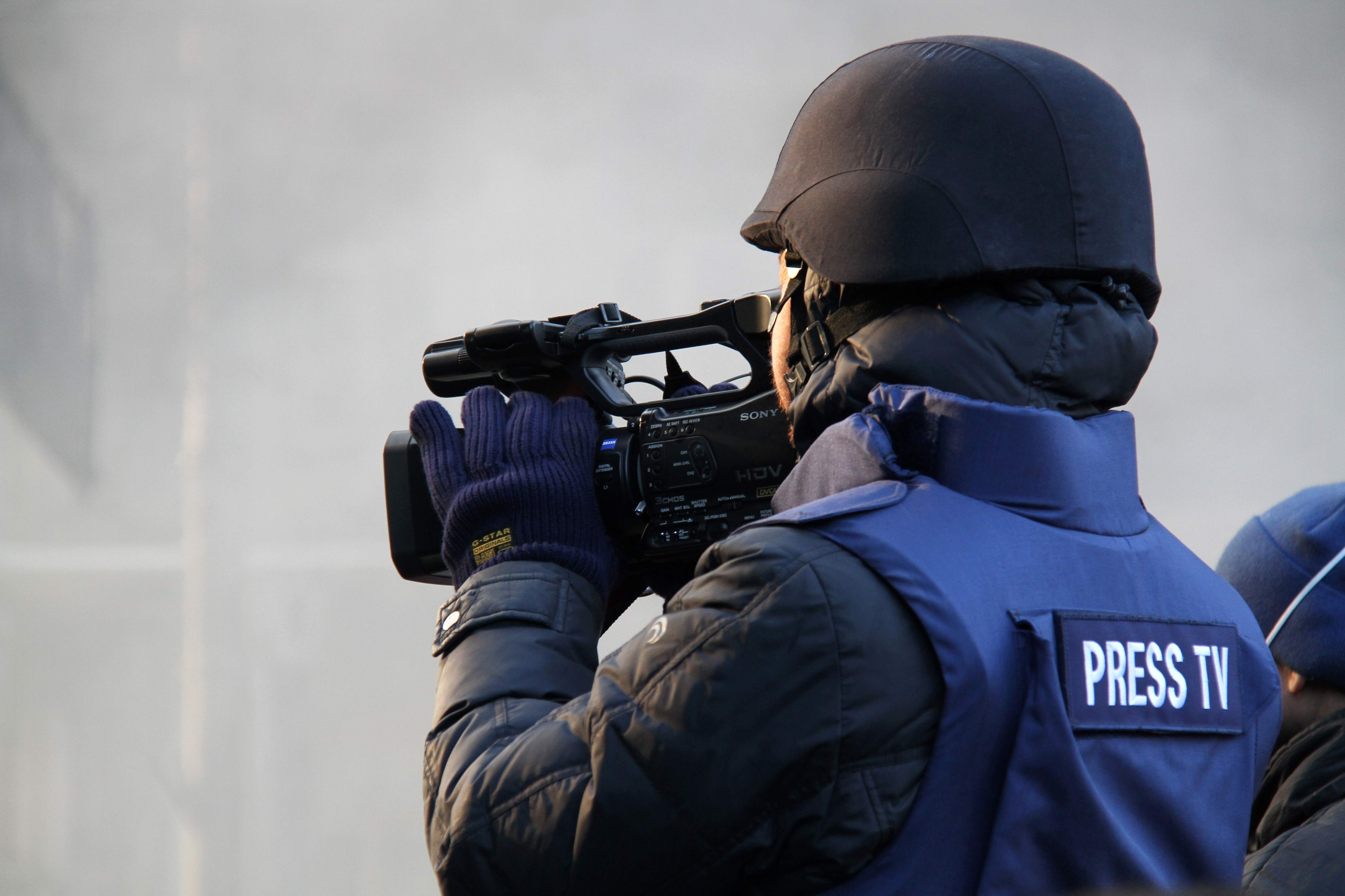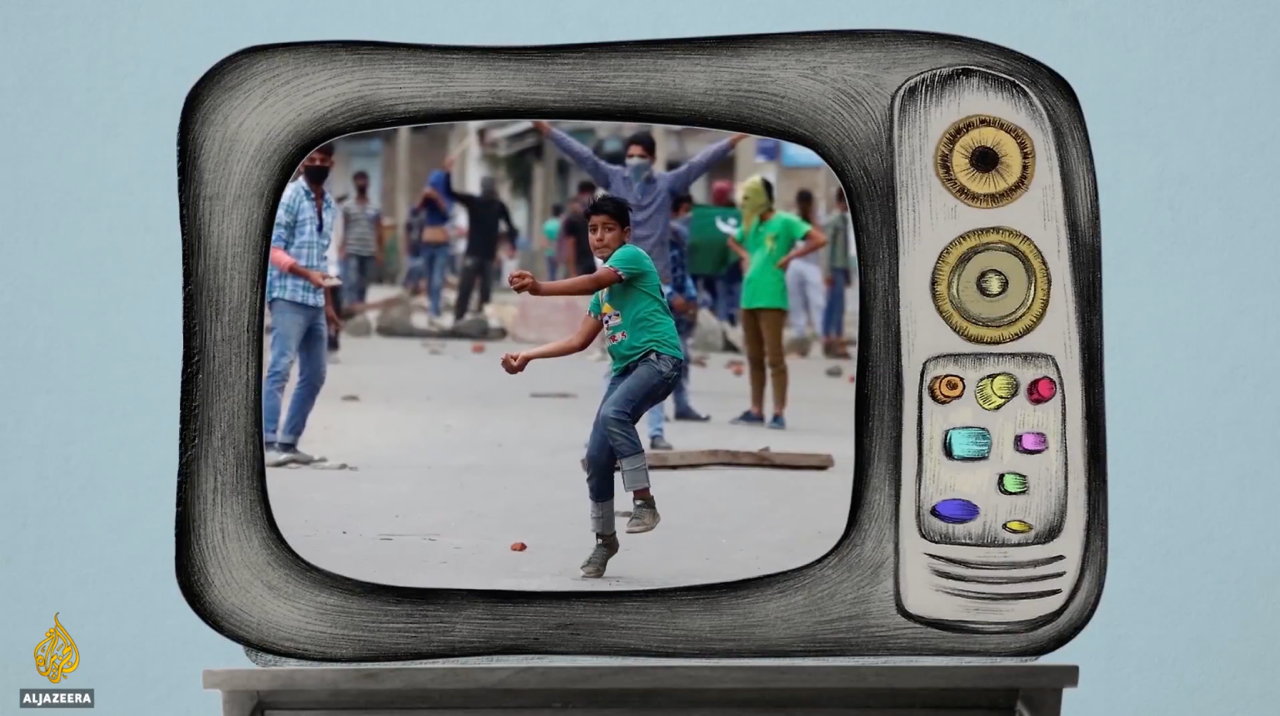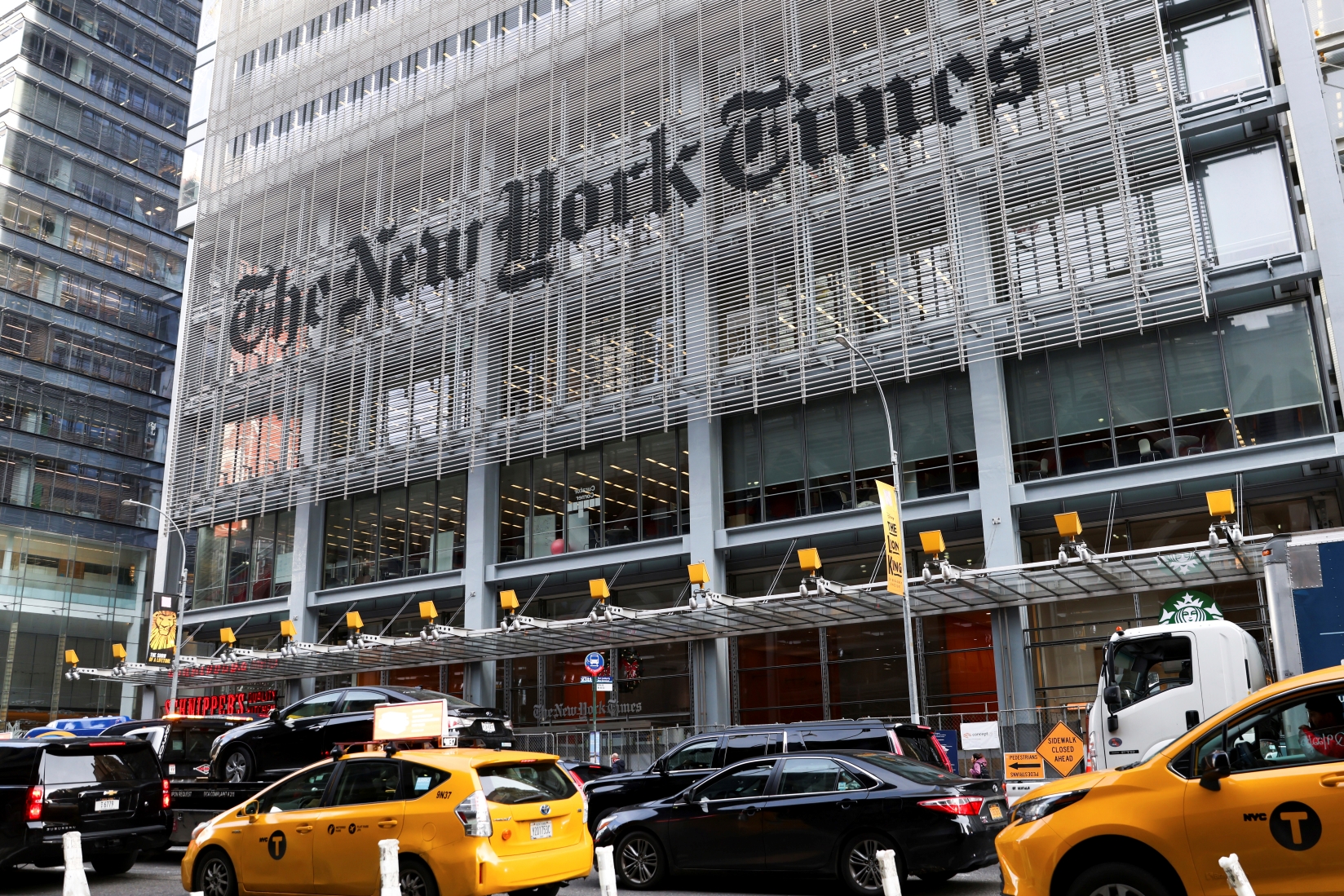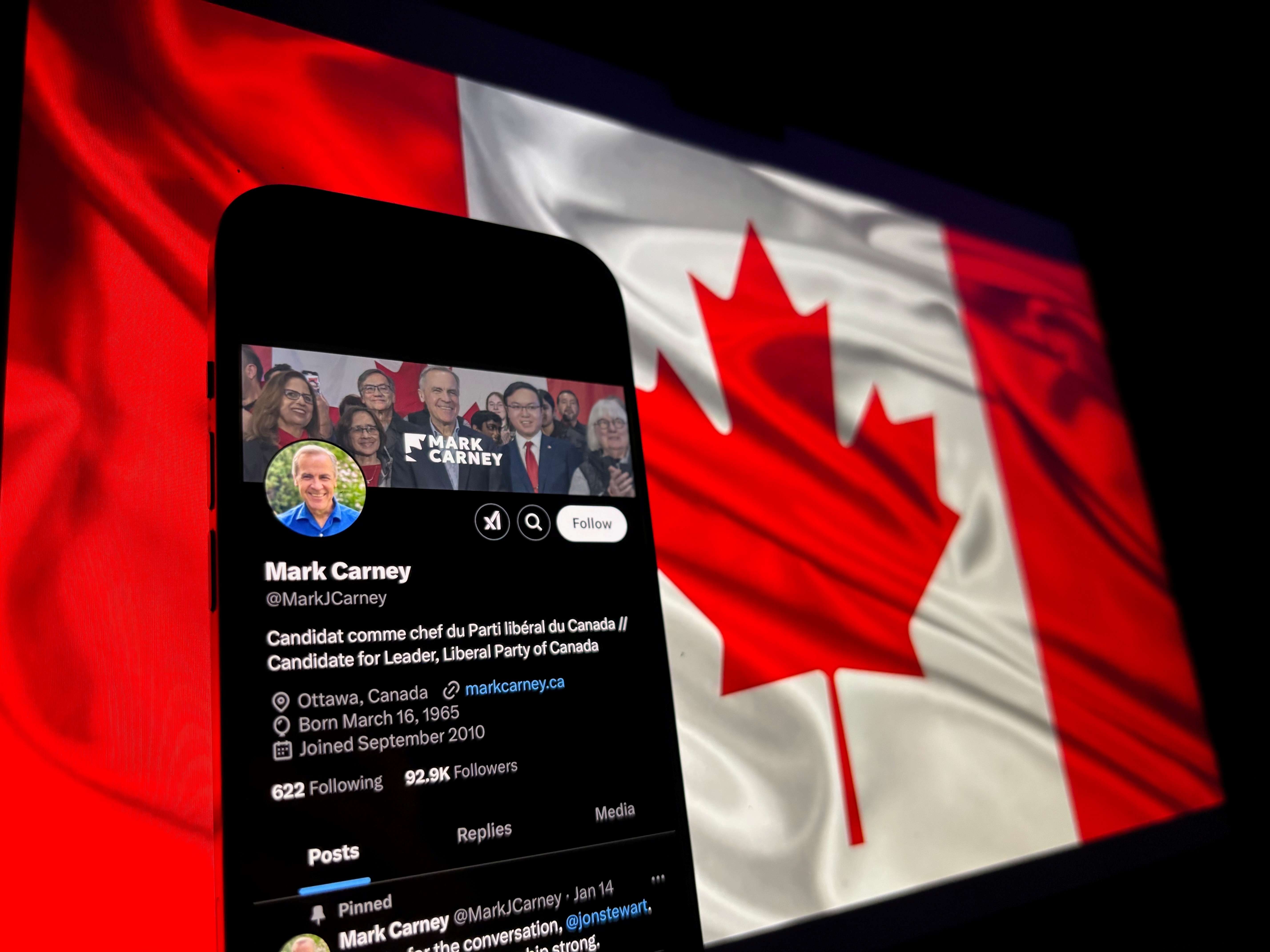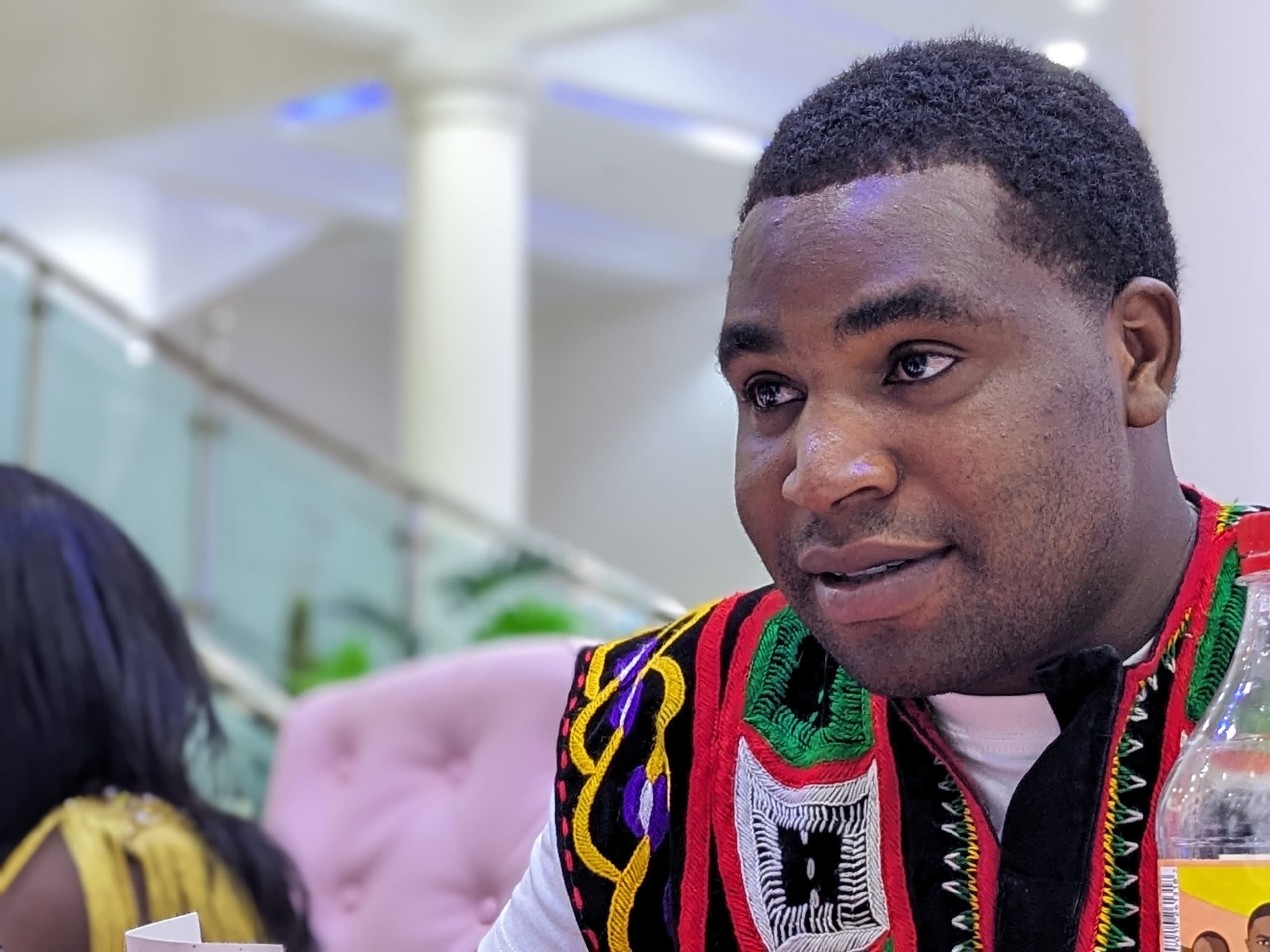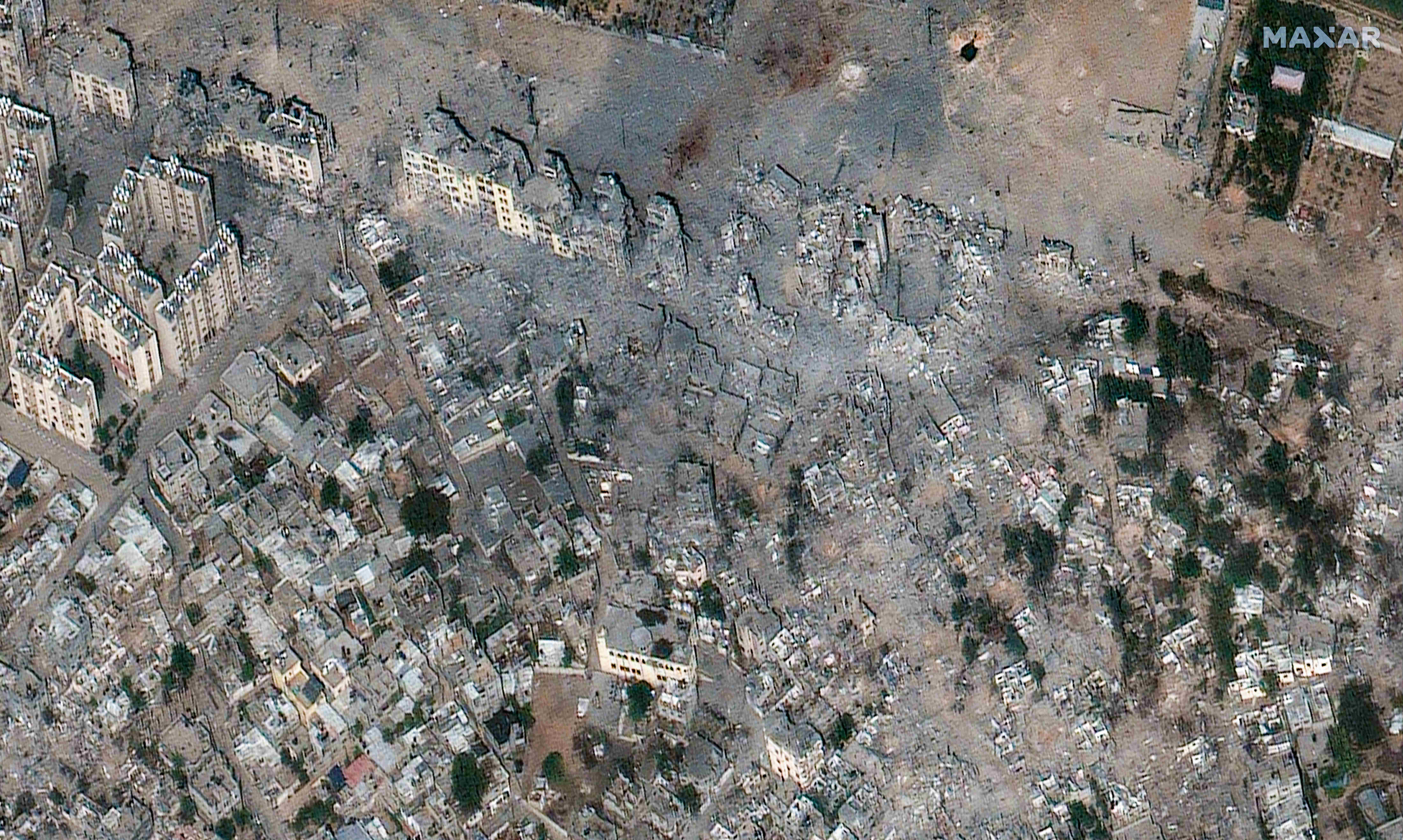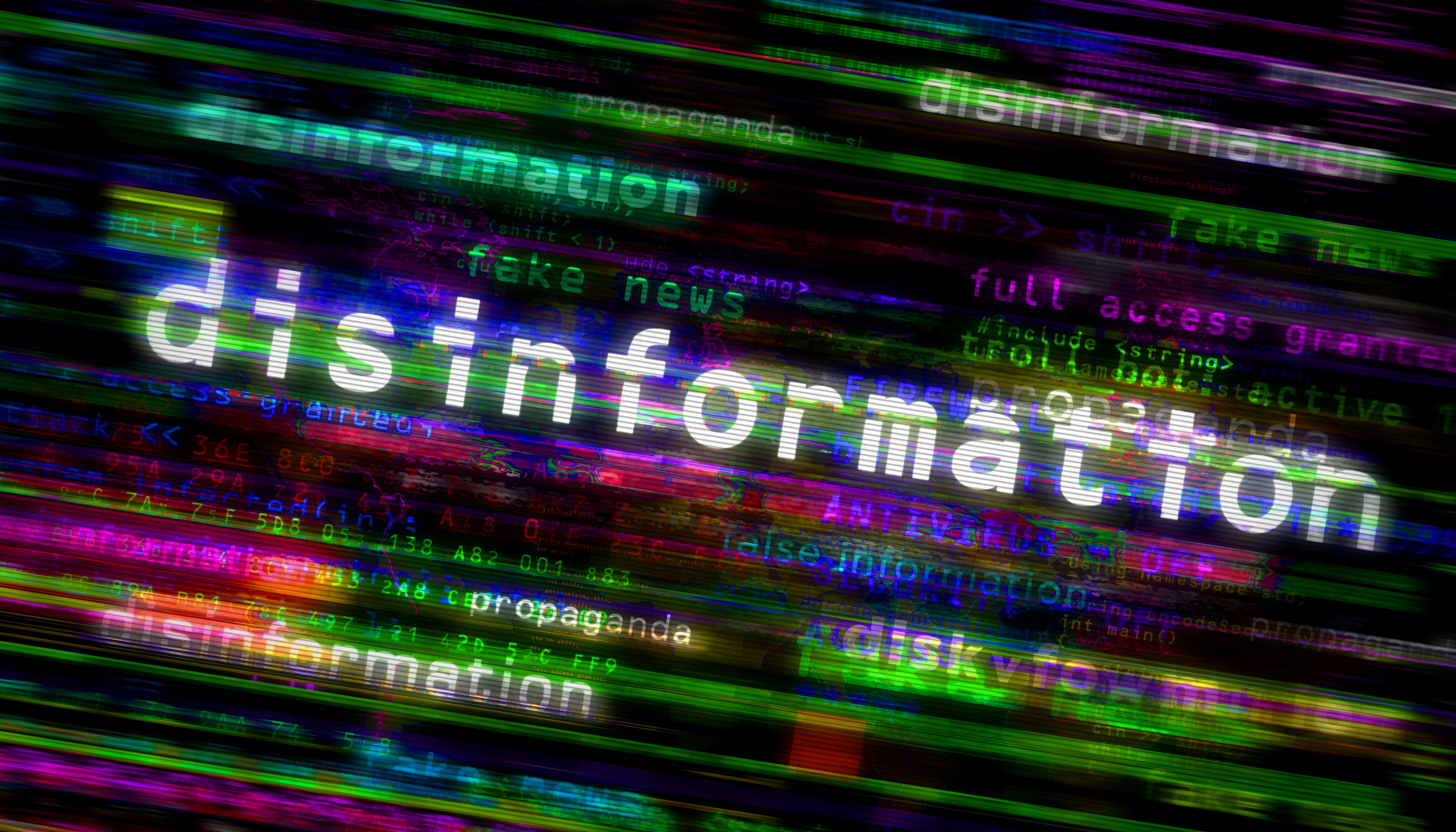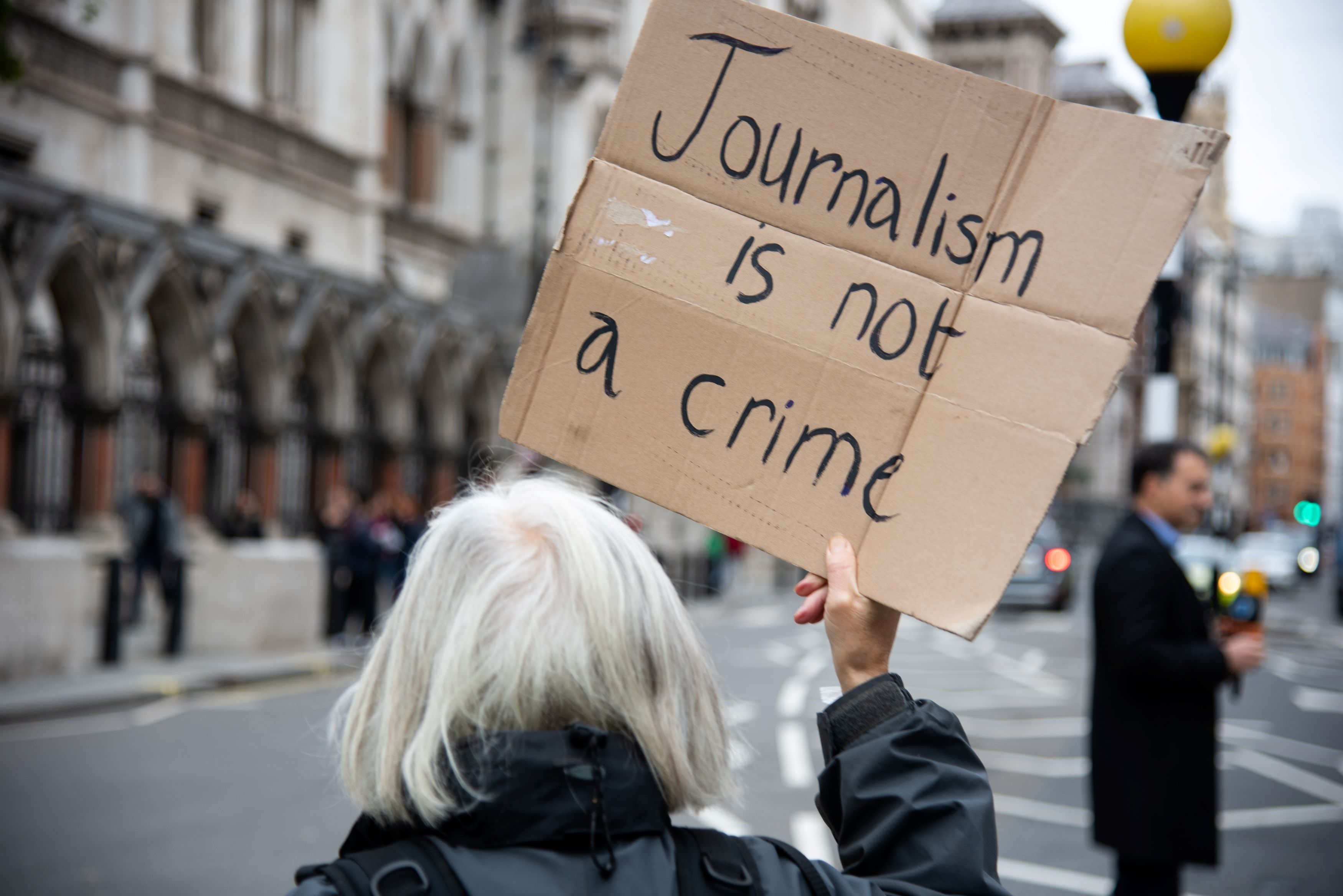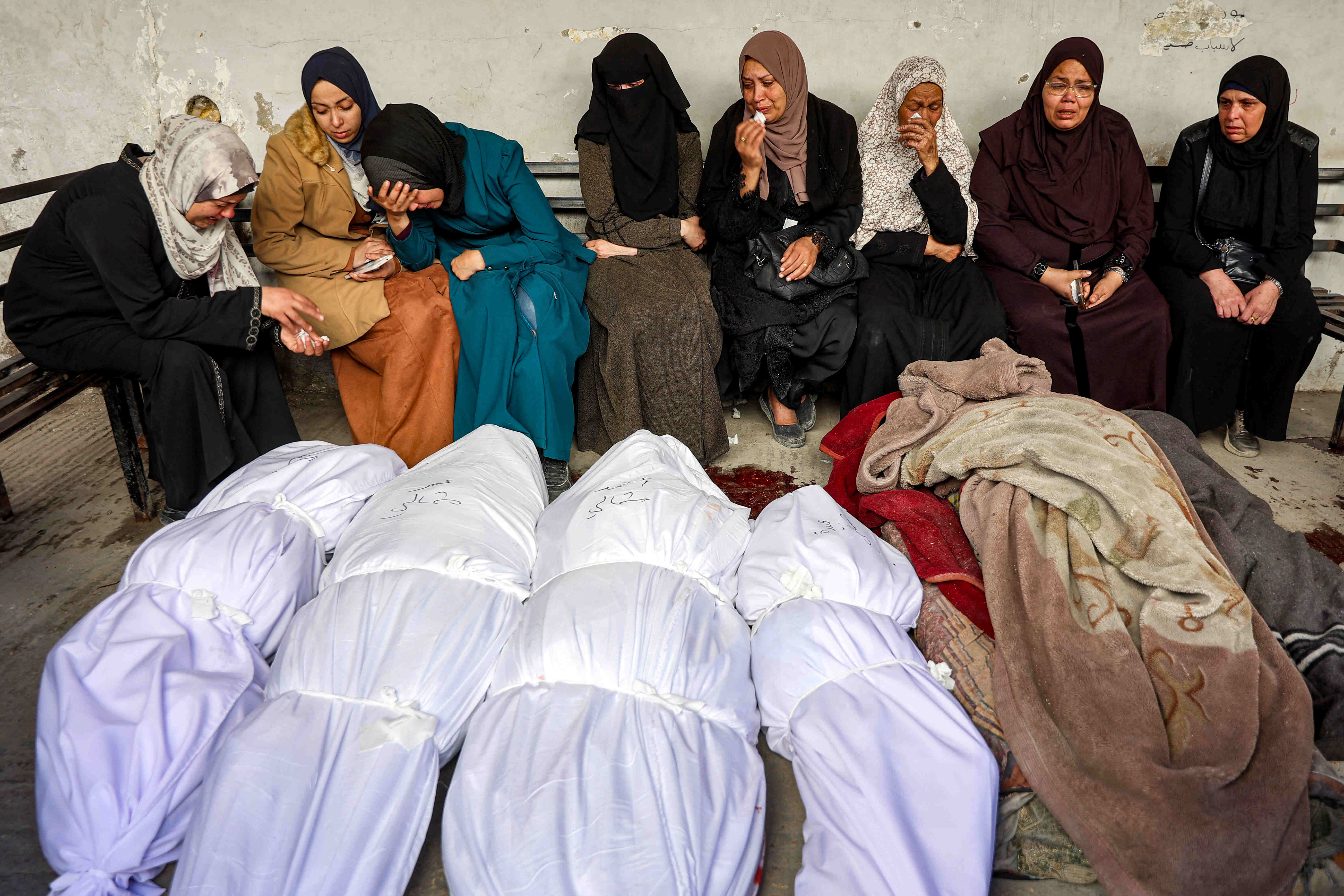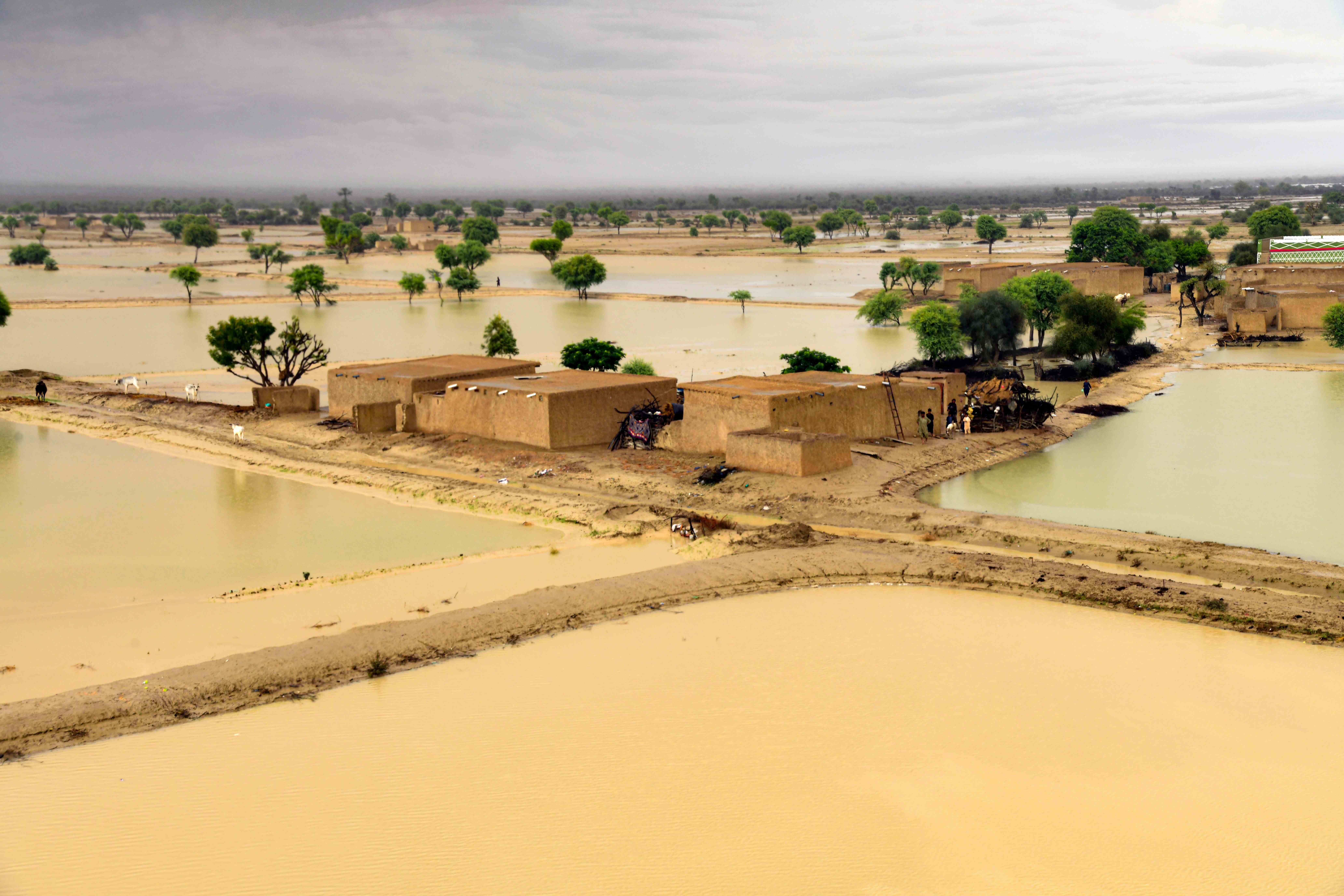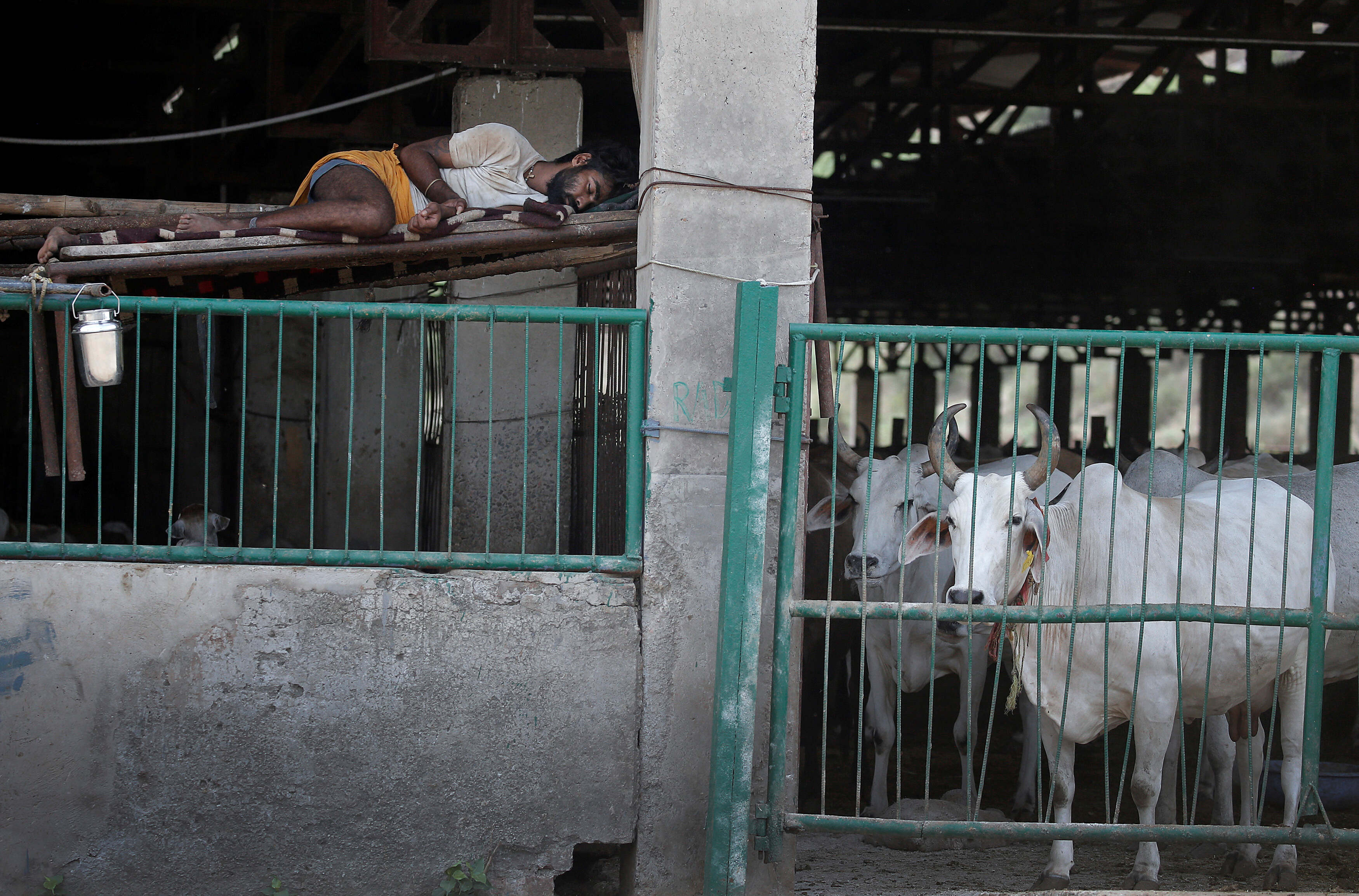The use of anonymous sources in journalism is considered, within professional and ethical standards, a “last option” for journalists. However, analysis of New York Times data reveals a persistent pattern in the use of “anonymity” to support specific narratives, especially Israeli narratives.
On September 5, 2018, The New York Times published an opinion piece penned by an anonymous author, marking a notable exception in mainstream American journalism. This decision was particularly significant for The New York Times itself, as it complied with the author's—a senior official within Donald Trump's administration at the time—request for anonymity. By agreeing to publish his testimony without disclosing his identity, the newspaper aimed to shield him from potential presidential backlash, which might have jeopardized his position.

The publication of the article ignited a firestorm of controversy, prompting an outpouring of over 23,000 letters to the editor from readers and numerous articles analyzing the decision. Readers and commentators alike demanded answers: Why publish this piece? How was the author contacted and verified? What were the motives behind the anonymity? Was there precedent for such actions? And what were the anticipated repercussions of its publication?
More than 23,000 letters poured onto the editor, all asking questions such as: "Why they publish this article?" "How did you find and contact the writer?" "How did you verify the source?" "Will you disclose their name later?" "Did you investigate the writer’s motives and consider them?" "Have you done this before?" "Did you consider the consequences of publishing the article?"
In response, The New York Times maintained its position with composure, addressing reader concerns through a series of articles and clarifications detailing its policies on handling anonymous sources. Such policies extend across all departments, including the Opinion section, which commands an entire floor in its Manhattan headquarters. The newspaper insists it adheres to the most stringent standards when granting anonymity, whether for news, features, or opinion pieces, emphasizing that such decisions are made to expose abuses of power, ensuring the information's reliability and news value, with anonymity as a last resort.
However, this episode also spotlighted a broader, often overlooked issue within journalism: the excessive reliance on anonymous sources, particularly those with official connections. In 2015, analysts highlighted that The New York Times published around 5,300 pieces based on information from unnamed sources, averaging 15 daily. This practice, which has persisted for decades, according research and critical sentiment, has eroded trust in journalism, questioning its credibility. This pattern of sourcing, while convenient for accessing insider information, raises questions about accountability, the potential for bias, and the integrity of the information disseminated to the public on critical issues.
In 2015, The New York Times published approximately 5,300 news articles and reports based on information from anonymous sources, averaging 15 pieces per day. This long-standing pattern, prevalent for many decades, is seen in opinion polls as contributing to the decline in public trust in journalism and undermining its credibility.
As a matter of fact, the over-reliance on anonymous sources by The New York Times has drawn significant criticism from senior writers within the newspaper, who have openly challenged the evident violation of the very editorial guidelines concerning the use of such sources inside the paper. This dissent stems from the public's “No. 1 complaint” against the Times, as highlighted by figures like Clark Hoyt, a notable former public editor for the paper. In a 2009 critique, Hoyt labeled this practice as 'pervasive and unchecked,' illustrating with multiple instances where his peers disregarded the rules, treating anonymous sources not as a last option but as a routine choice.
This practice has had dire repercussions, notably contributing to the misinformation that facilitated the invasion of Iraq. Before the war, The Times published numerous reports, often sourced from anonymous individuals, which later turned out to be either fabricated or grossly inaccurate. These reports, which suggested links between Saddam Hussein's regime and al-Qaeda, or the existence of weapons of mass destruction, were instrumental in shaping public and political opinion in favor of military intervention. Post-invasion, these claims were debunked, revealing the catastrophic impact of relying on unverified, anonymous sources for critical geopolitical narratives.
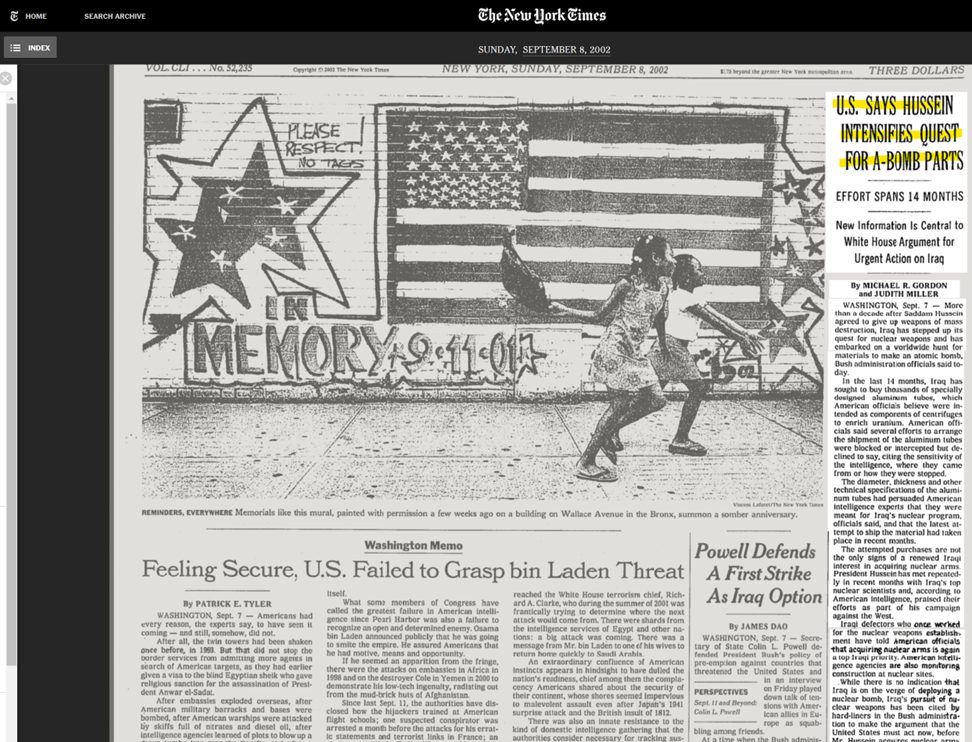
The New York Times has publicly recognized its reporting inaccuracies during certain pivotal periods, notably around the Iraq War and its prelude, where the paper admitted to lapses in its coverage. Despite these admissions, the acknowledgment has not fundamentally shifted the newspaper's approach or its historical pattern of aligning with narratives that support U.S. foreign policy objectives, particularly those enhancing American military and economic interests. This pattern persists, suggesting that while The New York Times might occasionally correct or acknowledge errors, its overarching relationship with power structures, especially in promoting U.S. geopolitical narratives, remains largely unchanged. This continuity is often critiqued in discussions on platforms like X, where users highlight recurring themes of bias or selective reporting that favor official U.S. positions, even when these positions are later proven to be based on flawed or manipulated intelligence.
Following the Iraq War, The New York Times introduced new editorial policies regarding the use of anonymous sources, as outlined in a memo from then Executive Editor Bill Keller in 2004. This memo required that when using information from unnamed sources, the newspaper must explain the source's credibility, caution readers if there was any hint of bias or motive, and justify the need for anonymity. Despite these guidelines, adherence has been lackluster. A study by the Columbia Journalism Review in 2008 indicated that compliance with these rules was below 20%, with a noted increase in the reliance on anonymous sources for opinion rather than factual reporting, contrary to the policy's intent. This suggests that while The New York Times has set standards for transparency and accountability, the practical application of these policies post-Iraq War has been inconsistent at best.
Despite implementing several updates to its editorial policies, The New York Times has maintained a significant reliance on anonymous sources, which remains a cornerstone of its reporting strategy. This approach highlights the newspaper's steadfast commitment to narratives that align with official or established viewpoints, especially in sensitive geopolitical matters such as those related to Israel. This reliance on anonymity not only shapes public perception but also underscores the paper's role in reinforcing certain political and diplomatic stances, often at the expense of transparency and source accountability.
The critique of The New York Times' coverage of the Israeli war on Gaza, as reflected in several reviews and detailed discursive studies, points to a perceived bias in its reporting practices, particularly concerning the use of anonymous sources. Critics argue that this practice has been employed with a suspicious leniency, suggesting an agenda to favor narratives that align with Israeli narratives and/or official U.S. foreign policy stances, thereby potentially extending the conflict and providing a veneer of justification for the genocidal actions of those in power. This challenges the newspaper's supposed commitment to impartiality, suggesting that its editorial policies might be bending under the weight of geopolitical narratives rather than strictly adhering to journalistic integrity.
These professional breaches have significantly increased during the months of this prolonged war, particularly in the first six months. According to a recent study, The New York Times was a leading American mainstream newspaper that relied heavily on anonymous official sources to convey information and opinions reflecting official Israeli and U.S positions regarding the war. The study’s analysis shows that over 70% of the reports included anonymous official sources during the research period. Additionally, a substantial percentage of these citations came from secondary sources, including opinions or information that are difficult to verify. In contrast, the Palestinian narrative was almost entirely sidelined, with only 7% of the journalistic materials relying on information from anonymous Palestinian sources, while the rest was attributed to various Arab, Western, and U.N sources.
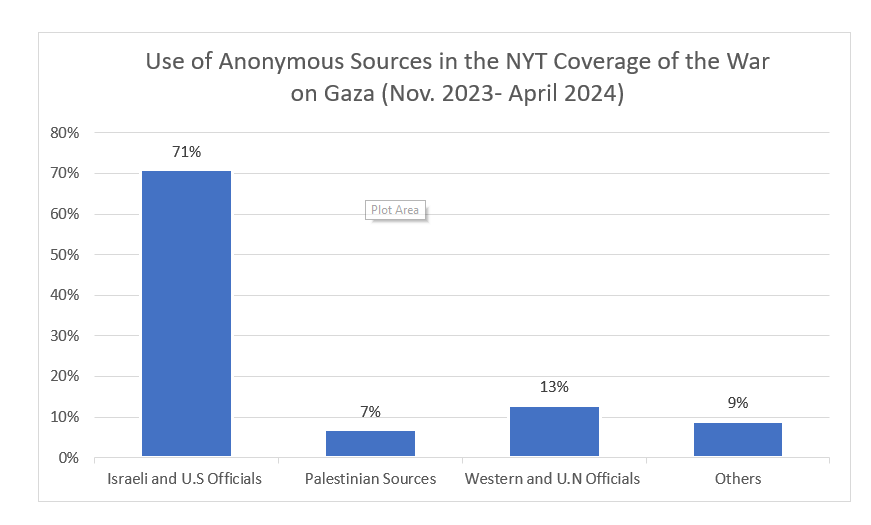
In this context, it is not surprising that the study praises The Times' “professionalism” given that the institution behind it—the Washington Institute for Near East Policy—is a right-wing organization closely affiliated with the pro-Israel lobby in the United States. This unwarranted praise is directed at the space almost exclusively reserved for the official Israeli narratives and those in favor of its war on Gaza, and the clear marginalization of Palestinian voices.
One of the findings from our analysis of the study’s data is that over 70% of the reports included anonymous official Israeli and American sources during the research period. Moreover, an overwhelming majority of the citations were from secondary sources, containing opinions or information that is difficult to verify.
Nevertheless, the New York Times has been actively engaging in a widespread distortion that is eroding the established professional standards related to using anonymous sources. More critically, the newspaper's misleading use of these sources distorts the objective realities on the ground in a war-stricken place like Gaza, by highlighting the positions and narratives of a those accused of committing war crimes, while neglecting, almost entirely, the perspective of the victims—nearly 41,000 of whom have been killed thus far, the vast majority of them women and children.


